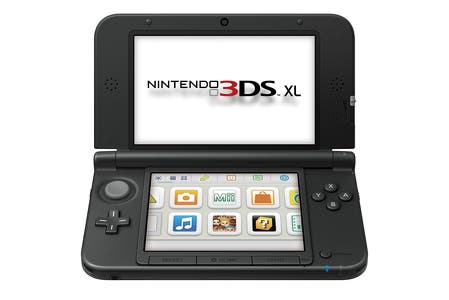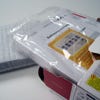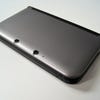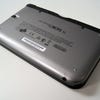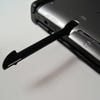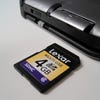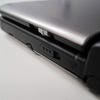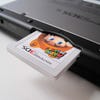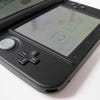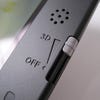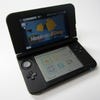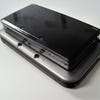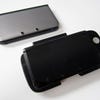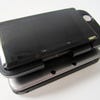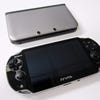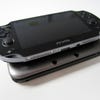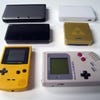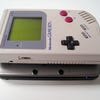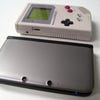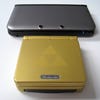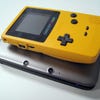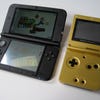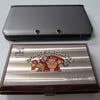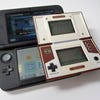Nintendo 3DS XL Review
Super-size Mii.
When Nintendo released the DSi XL in 2009, it marked the fourth revision of what was a phenomenally successful line of dual-screen consoles. Even Nintendo's sternest critics drew a blank; while an enlarged variant of the DSi might have seemed like clutching at straws, the fact that the DS range had been such a hit gave Nintendo room to experiment. It was even hinted by some sources that the system was aimed at older players with poor eyesight who would appreciate the bigger screens - a savvy attempt at broadening the already considerable market for the platform.
While it's easy to find an excuse for the DSi XL, the same cannot be said for the 3DS XL. Nintendo's latest portable system is a revision which comes just over a year after the release of the first 3DS, and although recent sales have certainly improved - in Japan, it has comfortably inherited the mantle of the best-selling DS - the auto-stereoscopic console hasn't been the runaway triumph that its creator had hoped for in other parts of the world. The 3DS XL is unlikely to be given as easy a ride as the DSi XL, then; this doesn't feel like an effort to subtly expand the console's core audience, but rather a gamble which Nintendo hopes will lend the format some forward momentum going into the latter half of 2012, and beyond.
To get the obvious data out of the way, the 3DS XL is bigger than its predecessor. Its vital statistics are 156mm x 93mm x 22mm, which makes it around 20mm longer than the original 3DS model, and roughly the same amount again deeper. Overall thickness has been maintained, but the weight has taken an upwards bump - 336g compared to the 3DS' 235g. However, despite piling on over 100g of heft, the system never feels heavy or unwieldy.
Spurning the glossy, faux-metallic casing which adorned its forerunner, the XL variant instead opts for a matt-effect plastic shell, which is divided into two colours on the unit we reviewed - black and silver. Initially, it's hard to overcome the slight feeling of disappointment; the 3DS XL somehow looks cheaper than the original system. The rounded edges are likely to divide opinion; they call to mind those chunky toy laptops aimed at preschoolers, but on the upside the curves do at least make the console more comfortable to hold.
Speaking of which, the XL addresses one of the big criticisms of the first 3DS variant: its size. Unless you happen to be gifted with hands of childlike proportions, it's almost impossible to play the 3DS for any length of time without developing hand-cramp. By increasing the system's footprint but keeping all of the buttons and pads the same size, Nintendo has solved this irksome issue with the 3DS XL. The only area of concern is the distance between the 8-way d-pad and the left shoulder trigger; when playing games like Super Street Fighter 4 3D Edition, you really have to stretch to be able to make contact with both simultaneously.
Screen Star
The most obvious benefit of the 3DS XL's larger proportions is its dual screens. The top display - the one which handles all the glasses-free 3D effects - is an impressive 90 per cent bigger than its equivalent on the original 3DS console. At 4.88-inches, it's dangerously close to PlayStation Vita territory, although it's worth noting that the overall resolution hasn't seen a boost - the display remains locked at 800 (400 pixels for each eye) x 240, so the physical size of the pixels is relatively large. This serves to emphasise the lack of anti-aliasing in most 3DS titles and the surfeit of jaggies remains one of the most distracting factors while gaming.
However, keeping on the positive side of things for the time being, the increased screen real estate really does make a difference to how the system plays. There's more room for visuals to breathe, and as a result titles like Super Mario 3D Land and The Legend of Zelda: Ocarina of Time 3D take on a more epic quality. Brightness appears to be roughly the same as it was on the original 3DS.
Another problem which has dogged existing 3DS owners is finding the sweet spot for the auto--stereoscopic display. Moving the system even slightly during play is often enough to break the 3D illusion, resulting in an unnerving 'dual image' banding effect. For a handheld console which is constantly moving thanks to natural shifts in your posture, this is quite a serious issue. Following its surprise announcement, it was hypothesized by some that the larger screen on the 3DS XL would eradicate this shortcoming, as it would effectively offer a bigger 'sweet spot' for the user. In reality, this doesn't seem to be the case - slight horizontal movements are still enough to break the image, although vertical shifts seem to be a little more forgiving.
"The 3D screen always felt too small, and while the XL clearly addresses this, the viewing sweet-spot is still restrictive and the increased size blows up the 3DS' real problems with image aliasing."
Annoyingly, the lower 320x240 pixel resolution screen - which is touch-sensitive - retains the resistive panel of its forerunners. Despite the obvious advantages of capacitive touch screens (better responsiveness, no need to apply any pressure) Nintendo remains committed to the cheaper resistive technology. As before, the screen possesses a spongy feel, although it doesn't seem to be as pronounced as the original 3DS screen.
The bundled stylus is no longer telescopic, and docks on the right-hand side of the unit, next to the SD card slot (which has also shifted position, having previously been located on the opposite side of the console). Some may grumble that it would have made more sense for the stylus dock to be on the top of the unit, as it was on the 3DS, but the change is a minor inconvenience at best.
Incredibly, Nintendo of Europe and Nintendo of Japan have both decided not to include a wall charger with the 3DS XL. The assumption seems to be that most potential buyers will either be upgrading from their existing 3DS console or even a DSi/DSi XL system - the same charger is used by all three consoles. However, this is a rather risky conclusion to come to, as it assumes that you'll be holding onto your older unit even when you've bought the XL.
We'd be willing to bet that many people will be actively trading in their superseded and consequently surplus systems, which will force the additional purchase of either a PSU or a USB charging cable. Speaking of which, would it really have cost Nintendo that much to include a USB lead with the device, bearing in mind they can be obtained for a couple of quid from eBay? North American buyers have been spared this annoyance, but that provides scant consolation to those in Europe and Japan who find themselves lumbered with a console which is effectively unplayable out of the box.
Elsewhere, things are slightly less irksome. The 3DS XL boasts a larger-capacity battery than the previous model, which Nintendo insists is good for around 3.5 hours to 6.5 hours with the 3D effect switched on (at the top end, that's around 1.5 hours more play time than the original console). As was the case with the original 3DS, you can conserve juice by setting the 3D slider to zero, which yields anything up to eight hours, depending on the activity. During our review we tested the battery in a variety of situations, and found that while it does offer a marked improvement over the one seen in its predecessor, it still feels lacking - especially when you're old enough to remember how long a pair of AAs lasted in the Game Boy Color.
"At the absolute best, the 3DS XL offers 1.5 hours of extra play time, but battery life is still paltry for those who remember how long a pair of AAs lasted in the Game Boy Color."
Prise open the SD card slot and you'll discover another stat-bump - Nintendo has swapped out the 2GB variant seen in the original machine and upgraded to a beefier 4GB version. A wise move, especially when you consider that the company plans to make all of its retail 3DS games available for download from this point onwards; that additional space is going to come in very handy.
Transitioning From 3DS to XL
Many of you reading this review may already own a 3DS console, and could possibly be eyeing this revision as an upgrade. While Nintendo's often old-fashioned perspective on user accounts remains an annoyance for loyal fans, the company has at least put measures in place which allow you to port over the user data from one 3DS system to another - just as the original 3DS allowed DSi owners to carry over their digital purchases.
Typically, this transfer system is more awkward than it really needs to be; during the process of migrating data from our existing 3DS console to the shiny new XL, we encountered an unexplained error which prevented almost all of our downloaded content from being saved on the 3DS XL's SD card. As a result, we had to manually re-download all of the games again, and face up to the frustration of losing all save game data to the ether.
When shifting from one 3DS to another, the 'donor' console is wiped and reset to factory default, which seems excessive but prevents the issue of 'clone' systems existing and clashing with one another. Of course, this also means that should your transfer go awry as ours did, you have no backup.
"It's possible to transfer over all your existing 3DS content onto the new XL model, but it's unnecessarily painful and in our case, an unexplained error wiped all of our save games."
This entire process is akin to pulling teeth, especially when you consider how easy it is to sign your user account into an Xbox 360 that isn't yours. Nintendo also has to remember that it is competing not only with portable consoles but with smartphones, and the ease with which a single Google account can be activated on several different Android devices - and thereby grant that device seamless access to downloads, emails and cloud-stored photos and music - hints at the real future of mobile technology. Nintendo badly needs to adjust how its systems handle user accounts, especially if it is hoping to entice current 3DS owners to upgrade to a new console.
Nintendo 3DS XL: The Digital Foundry Verdict
"A larger form factor makes the system more comfortable for big-handed users, and the imposing screens enrich the experience from a visual perspective - even if the resolution remains identical to the old model."
For Nintendo's harshest critics, the 3DS XL is likely to come across as a missed opportunity. Why no second d-pad, when the existence of the Circle Pad Pro suggests that Nintendo should have included it in the original version of the console? Why increase the screen size but maintain the same resolution? Why opt for resistive touch tech when the recent flood of bargain basement Android tablets proves that superior capacitive displays are viable, cheap alternatives?
Such questions miss the point, however. Nintendo isn't trying to upgrade or enhance the 3DS concept with the XL, but rather expand it - in more ways than one. A larger form factor makes the system more comfortable for big-handed users, and the imposing screens enrich the experience from a visual perspective - even if the resolution remains identical. Drafting in radical hardware changes at this stage would have meant alienating all of the millions of existing 3DS users out there, and that's not Nintendo's style. If you glance back over the Kyoto company's history of hardware revisions, it has always gone to great lengths to ensure that first-generation hardware is able to play the exact same software as subsequent updates - the DSi being the only notable exception, thanks to the inclusion of download-only games.
In that regard, it's difficult to brand the 3DS XL a dismal failure or a rousing success; yes, Nintendo could (and possibly should) have gone further with this revision, but by doing so it could have created a fractured 3DS market. In conclusion, this enlarged system is the clear choice if you've yet to dip your toe into the waters of glasses-free 3D gaming, but we're not entirely sure it offers enough benefits over the previous hardware model to justify the making the transition - which, thanks to Nintendo's lacklustre data transfer procedure, is quite painful.
